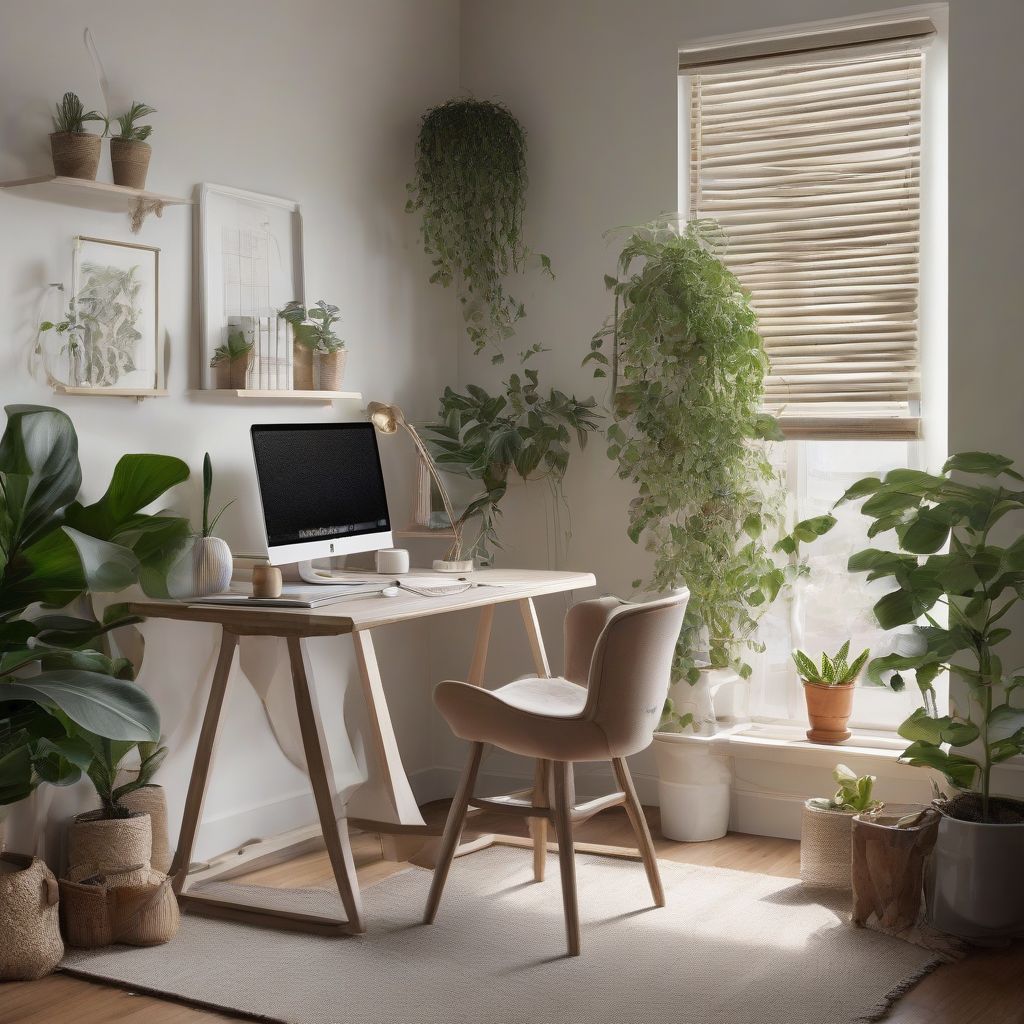Ever feel like your workspace is working against you? You’re in the zone for focused work, but your surroundings scream “clutter and chaos.” Or maybe you’re ready to brainstorm, but your desk feels as inspiring as a doctor’s waiting room.
We’ve all been there. The truth is, a static workspace can hinder productivity and creativity. The good news? You can design a workspace that effortlessly adapts to your ever-changing needs. And no, it doesn’t require a magic wand or a complete office overhaul.
Let’s dive into how to create a dynamic workspace that helps you conquer any task.
Understanding the Need for Adaptability
Think about the variety of tasks you tackle in a given day. You might jump from:
- Deep work: Analyzing data, writing reports, or crafting presentations
- Collaboration: Brainstorming with colleagues, attending virtual meetings, or giving presentations
- Creative tasks: Developing marketing campaigns, designing graphics, or editing videos
- Administrative work: Answering emails, scheduling appointments, or organizing files
Each of these activities demands a different environment to thrive. Trying to power through a complex spreadsheet in a cluttered, noisy space is a recipe for frustration. Similarly, a sterile, rigid setup can stifle creativity.
 Adaptable Workspace
Adaptable Workspace
Key Elements of an Adaptable Workspace
A workspace that adapts to different tasks isn’t about expensive gadgets or trendy furniture. It’s about incorporating key elements that cater to your physical, cognitive, and emotional needs.
1. Ergonomics: Prioritize Comfort and Health
Discomfort is the enemy of productivity. An ergonomic setup keeps you feeling your best so you can focus on the task at hand:
- Adjustable Desk: Switching between sitting and standing throughout the day can boost energy levels, improve posture, and reduce back pain.
- Ergonomic Chair: A good chair should provide lumbar support, adjustable height, and armrests to minimize strain on your back, neck, and shoulders.
- Monitor Placement: Position your monitor at eye level and an arm’s length away to prevent eye strain and neck pain.
- Keyboard and Mouse: Choose ergonomic designs that promote a natural wrist position.
Expert Tip: “Invest in a good quality chair and adjustable desk. It’s an investment in your long-term health and productivity.” – Dr. Kevin Lau, Ergonomics Specialist
2. Flexibility: Create Zones for Different Activities
Divide your workspace into distinct zones to support various tasks:
- Focus Zone: Dedicate a quiet area with minimal distractions for deep work. This could be your main desk facing a wall or a separate corner with a comfortable chair and good lighting.
- Collaboration Zone: Designate a space for meetings, brainstorming sessions, or collaborative work. A round table, comfortable chairs, and a whiteboard can foster communication and creativity.
- Creative Zone: Infuse this area with inspiration! A mood board, colorful accents, or plants can spark your imagination.
Pro Tip: Use rugs, room dividers, or even plants to visually separate your zones and signal a shift in mindset.
3. Lighting: Harness the Power of Natural and Artificial Light
Lighting plays a crucial role in regulating your mood, energy levels, and focus.
- Natural Light: Position your workspace near a window to benefit from natural light, which can boost mood and reduce eye strain.
- Task Lighting: Supplement natural light with adjustable desk lamps to provide focused illumination for specific tasks.
- Ambient Lighting: Create a warm and inviting atmosphere with soft, diffused lighting.
Did You Know? Exposure to natural light can improve sleep quality, which is essential for optimal cognitive function and productivity.
4. Organization: A Clutter-Free Space for a Clear Mind
Clutter is a productivity killer. It competes for your attention and increases stress levels.
- Storage Solutions: Invest in drawers, shelves, and filing systems to keep your workspace tidy.
- Cord Management: Tame those tangled cords! Use cable ties, clips, or a cable management box to keep everything organized.
- Regular Decluttering: Set aside time each week to declutter your workspace and put things back in their designated spots.
Pro Tip: Use the “everything has a home” principle. When every item has a designated place, it’s easier to maintain order.
5. Personalization: Infuse Your Personality and Boost Mood
A sterile and impersonal workspace can dampen creativity and motivation. Don’t be afraid to add personal touches:
- Plants: Indoor plants not only purify the air but also reduce stress and enhance well-being.
- Artwork and Photos: Display inspiring artwork, motivational quotes, or cherished photos to personalize your space.
- Aromatherapy: Use essential oil diffusers or scented candles to create a calming or energizing atmosphere.
Remember: Your workspace should be a reflection of you. Surround yourself with things that bring you joy and inspiration.
Bringing It All Together: Creating Your Adaptable Workspace
Designing an adaptable workspace is an ongoing process, not a one-time event. Start by incorporating one or two changes at a time and observe how they impact your productivity and well-being. The key is to create a space that supports your physical, cognitive, and emotional needs, allowing you to do your best work, no matter the task.
What are your favorite tips for creating an adaptable workspace? Share your thoughts in the comments below!
[amazon bestseller=”ergonomic office chair”]
